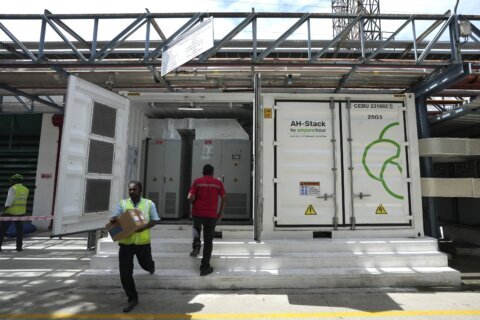Philadelphia is known as a vibrant city with a rich history and impressive food scene. Art and culture are well-established, so it’s easy to see why a lot of people want to settle down there.
But if you’re looking to buy a home in Philadelphia, it’s important to have a solid pulse on the city’s real estate market. Here’s some key data about the Philadelphia-Camden-Wilmington metropolitan statistical area (MSA) you may find helpful courtesy of the U.S. News Housing Market Index.
[Related:The Hottest Housing Markets in the U.S.]
How the Philadelphia Housing Market Changed in 2022
Single-family home construction slowed down in Philadelphia in 2022. In April 2022, there were 686 permits issued for single-family detached homes in the city, according to data from the U.S. Census Bureau. In April of 2023, there were 547. That’s a year-over-year decrease of about 20%. After hitting a 10-year high in December 2021 of 1,153, permit issuances declined steadily at the beginning of 2022, showing a 24% drop in the first quarter of 2022 compared with the first quarter of 2021. The high point of 2022 came in January, with 757 permits approved, then bounced around, settling at 474 in December 2022.
Multifamily construction also stalled quite notably during 2022. Permits issued shot up in December 2021 to at least 30-year highs, and remained high through May 2022. In April 2022, there were about 2,224 permits issued for multifamily buildings. In April 2023, that figure plunged to 573. That’s a year-over-year decline of 74%.
Philadelphia’s multifamily sector has shown incredible volatility since the start of the pandemic in 2020, and Philadelphia magazine reported that 95% of all newly constructed Greater Center City units in 2021 year were apartments, not homes. Multifamily housing construction is being driven by strong demand for rental apartments, with high borrowing costs pushing homeownership out of the reach of many Americans.
In the first quarter of 2022, there were a total of 6,693 multifamily permits issued. In the same period in 2023, those numbers plummeted to 1,544, a 77% drop. But the 2023 numbers were in line with those from 2019 and 2020, so whether that’s a sign that the pandemic years were an anomaly bears watching.
[Related:What Should You Consider When Deciding Between a Condo vs. House?]
Philadelphia Housing Supply and Demand
As is the case for many major U.S. metro areas, housing inventory is sorely lacking in Philadelphia. Alison Simon, a real estate agent with Keller Williams Philly, has been selling Philadelphia real estate for seven years. She says inventory in the city is down quite a bit compared with a year ago. And part of that ties into today’s higher mortgage rates.
Simon says, “Mortgage rates are impacting supply more than demand.” Demand for Philadelphia real estate has been consistent and steady over the past year, she says. The problem is that there just isn’t enough inventory to meet buyer demand, partly due to the fact that many sellers are opting to stay put in today’s mortgage rate environment.
As Simon explains, “The question from sellers is ‘Where do I go with the lack of inventory and rates?'” The bulk of the sellers she’s seeing are people unloading a home following the death of a family member, people who are getting divorced, those who are downsizing, and those looking at job transfers. But outside of those categories, there’s been minimal movement from sellers.
Simon also notes that demand is particularly strong for suburban homes in the area. “In the Philly suburbs, some buyers are still waiving everything,” she says. “Because of the lack of inventory in the suburban market, people are still having to waive appraisal contingencies and be creative with their inspections.”
Simon says that many buyers are doing pre-inspections before making offers so they’re able to waive a home inspection contingency in their actual purchase contract. But, she says, we’re past the days of sight unseen purchases that were more prevalent when mortgage rates were super low and buyer demand was truly intense.
[READ: Understanding Housing Inventory and What It Means for You.]
As of April 2023, housing supply in Philadelphia sat at a 3.4-month supply, based on data from Redfin. That’s a year-over-year increase of about one month’s worth of inventory. But it’s well below the 6-month supply that’s often needed to satisfy buyer demand in full.
On a national level, housing supply sat at 2.1 months of inventory in April 2023, which is an increase of about a 2/3-month supply from a year prior. So in that regard, Philadelphia is doing better from an inventory standpoint than the broad U.S. real estate market.
Meanwhile, the rental vacancy rate for Philadelphia reported for March 2023 by the Census Bureau was 4.5%. That’s an increase of 1.2% year over year. The national rental vacancy rate that same month was 6.4%, representing a 0.7% increase from a year prior.
For the week ending June 2, mortgage applications fell 1.4% on a seasonally adjusted basis from the week prior, according to the Mortgage Bankers Association’s Weekly Mortgage Applications Survey. On an unadjusted basis, the Market Composite Index, which is a measure of mortgage application volume, dropped 12% from the previous week. That same week, the average contract interest rate for 30-year conforming fixed-rate loans decreased to 6.81% from 6.91% a week prior.
Furthermore, in April 2023, consumer sentiment nationally fell 1.7 points on a year-over-year basis to 63.5, according to the Survey of Consumers from the University of Michigan. In April 2022, it was 65.2. Consumer sentiment peaked at 101 in February 2020, right before the pandemic.
Median Home Price in Philadelphia
In April 2023, the median home price in Philadelphia was $263,000, representing a decrease of 4.4% from a year prior, according to Redfin data. On a national level, the median home price in April 2023 was $408,000, representing a decline of 3.8% from April 2022.
Simon says that while buyer demand has slowed down and sellers aren’t commanding the sky-high prices they were in 2021 and even 2022, bidding wars are still popping up.
“Bidding wars happen when homes are priced right,” she explains. But, she says, “Some sellers are stuck in that 2021 mentality. When they are, their homes sit on the market.”
In April 2023, the median rent price in Philadelphia was $1,855, which represents a 7.3% increase from a year prior. This showcases Philadelphia’s strong rental market. On a national level, the median rent price in April 2023 was $2,018, up 4.5% from a year ago.
Data firm Black Knight shows that 0.8% of homes with mortgages in Pennsylvania experienced foreclosure activity in April 2023, up 0.3% from a year prior. Delinquency rates rose 1% on a year-over-year basis to 4.3%.
Interest rates for 30-year mortgages sat at 6.42% as of May 2023, representing a 1.2% increase year over year, according to Freddie Mac’s Primary Mortgage Market Survey. As of June 8, the average contract interest rate for a 30-year fixed, conforming mortgage was 6.71%, according to Freddie Mac.
Simon says that some of her buyers are struggling to come to terms with today’s mortgage rates. As she explains, historically speaking, today’s rates aren’t so high. It’s that borrowers got used to the record-low rates seen in 2021 and have been trapped in that mentality. And although demand is still solid, it’s not what it was a couple of years ago.
“When money is cheap to borrow, you have more people wanting to borrow it,” she says.
Unemployment Trends in Philadelphia
Philadelphia’s non-farm employment rose by around 139,000 jobs in April 2023 on a year-over-year basis to 3.09 million. In April 2023, the unemployment rate in Philadelphia was 3.1%, according to the Bureau of Labor Statistics. That’s a 1% decrease year over year. The national unemployment rate in April 2023 was 3.4%, down 0.2% year over year.
Builder Confidence in Philadelphia Is Low
In May 2023, builder sentiment in Philadelphia was 45 out of 100, according to the National Association of Home Builders (NAHB)/Wells Fargo Housing Market Index. In May 2022, it was 76. Builder sentiment is negative at values below 50, neutral at 50, and positive at values over 50.
The Architecture Billings Index, an economic indicator for nonresidential construction activity, was 47.2 in April 2023, down 5.9% year over year. A score of 50 represents no change from the previous month, a score above 50 indicates an increase in firm billings from the previous month, and a score below 50 represents a drop in billings from the previous month.
Philadelphia Real Estate Market: Predictions
Simon thinks that in the coming year, buyers might have more inventory to choose from. But that won’t be the case across the board.
“I think inventory will level out inside of the city, and we’ll see more people putting their homes up for sale inside the city proper,” she says. “In the suburban market, it’s going to stay low inventory for a long time.”
Simon also doesn’t foresee any major changes in mortgage rates in the coming year. But she thinks that buyers are going to increasingly start accepting today’s rates.
All told, Simon feels that Philadelphia real estate is a good investment. And this holds true even in the face of persistent recession warnings. As she explains, “In 2008, the recession didn’t hurt the Philly market.” Similarly, a near-term recession is unlikely to send Philadelphia home values plunging. And a big reason is that the city has so much to offer.
“We’re an eds and meds city,” Simon says. “Philadelphia has lots of schools and hospitals.” That alone is a major draw, and one that’s likely to drive buyers to the city even if broad economic conditions decline.
More from U.S. News
The 25 Best Places to Live on the East Coast in 2023-2024
When Will Housing Prices Drop?
The Most Undervalued Housing Markets in the U.S.
Philadelphia Housing Market Forecast originally appeared on usnews.com







